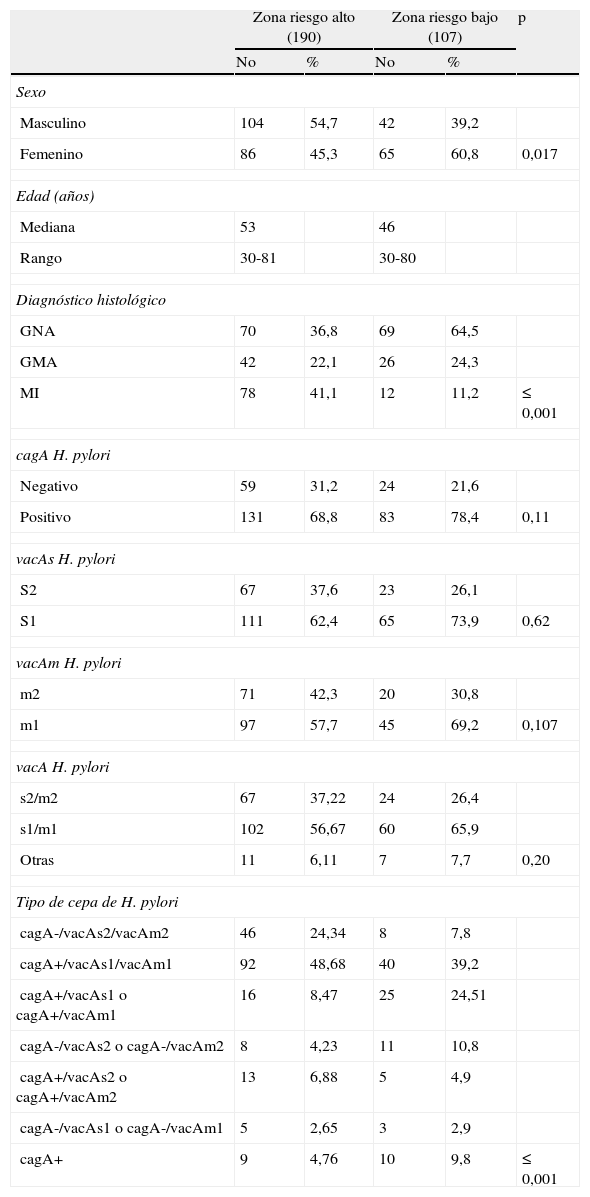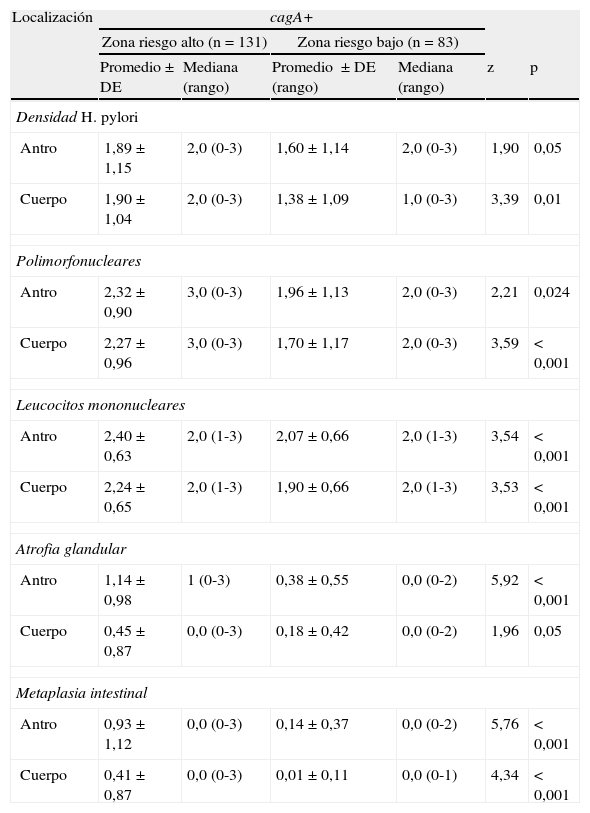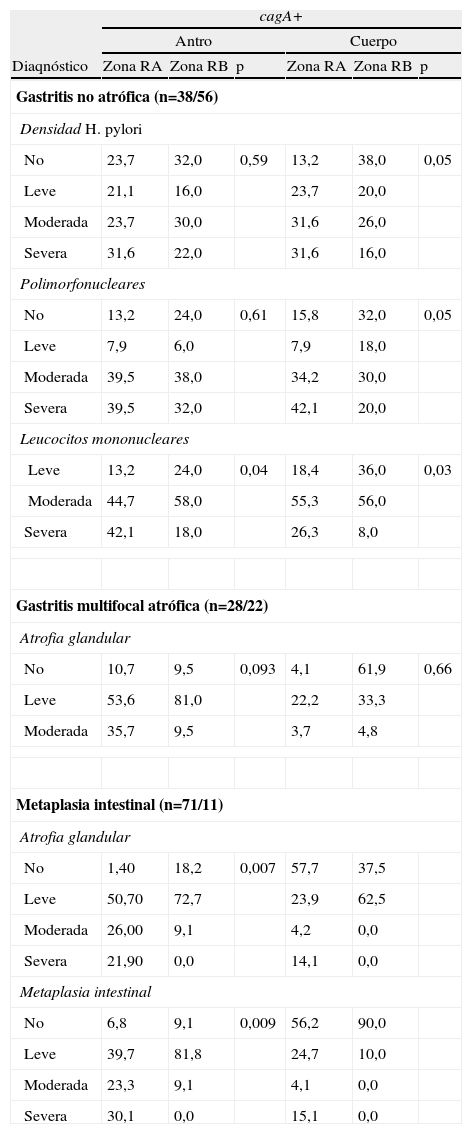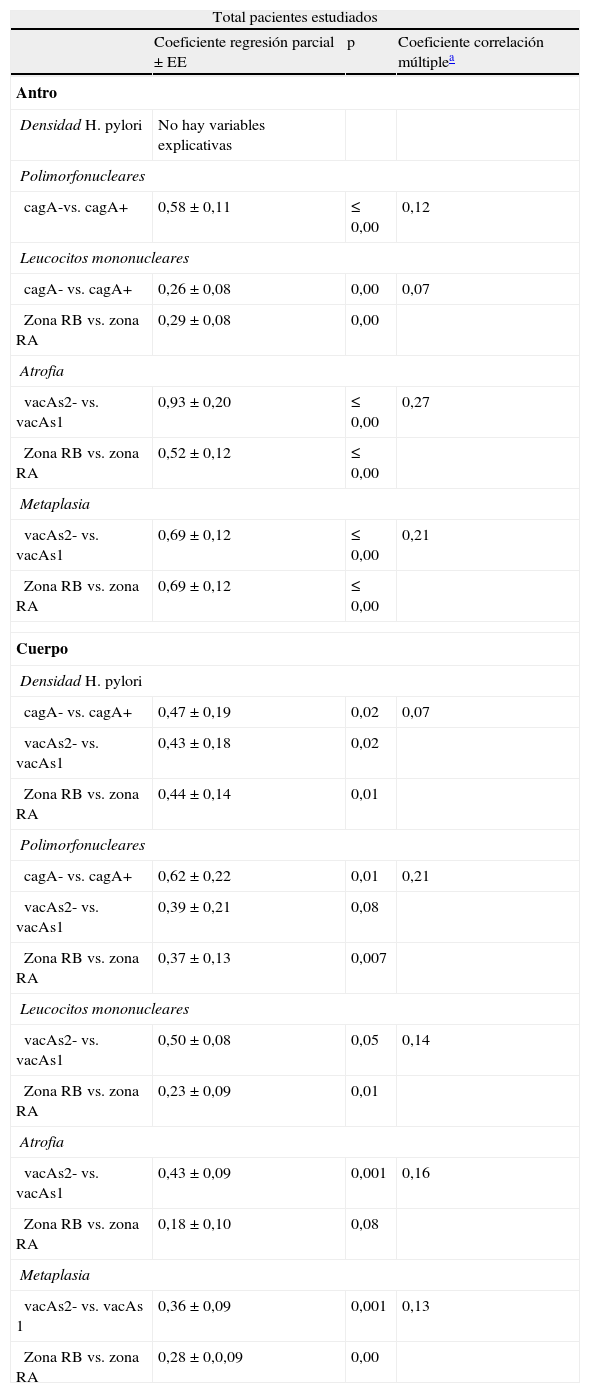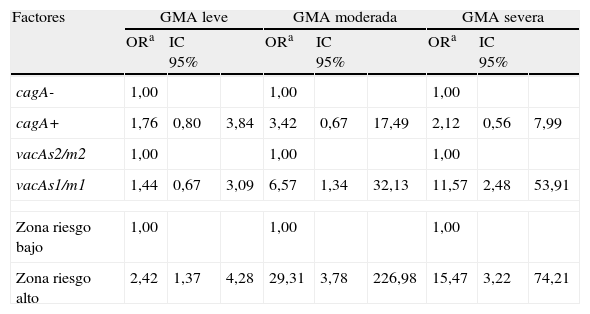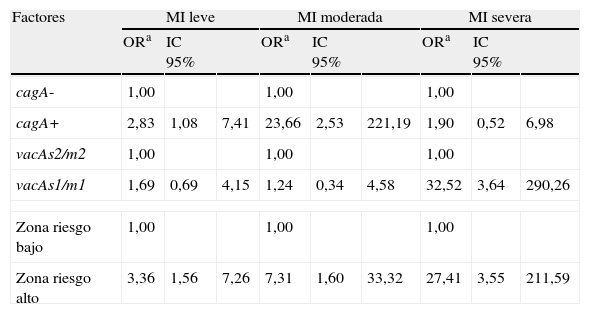Analizar los cambios histopatológicos en la mucosa gástrica de portadores de Helicobacter pylori, genotipos cagA y vacA, en 2 zonas de riesgo opuesto para cáncer gástrico en Colombia.
Materiales y métodosSe estudiaron 297 pacientes con gastritis asociadas a infección por Helicobacter pylori; 109 de la zona de riesgo alto y 107 de la zona de riesgo bajo para cáncer gástrico con toma de biopsias en antro y cuerpo gástrico; la clasificación y calificación de las gastritis se hizo según el sistema de estadificación OLGA y el sistema actualizado de Sydney. La genotipificación de Helicobacter pylori se realizó mediante PCR, a partir de extracción de ADN de biopsias. El análisis estadístico incluyó la prueba Mann-Whitney, X2, regresión lineal múltiple y regresión logística multivariada.
ResultadosLa severidad de las alteraciones histopatológicas en los pacientes infectados con los genotipos cagA y vacAs1/m1 fue mayor en la zona de riesgo alto (p≤0,05). El grado de inflamación crónica, atrofia y metaplasia es mayor en los pacientes de la zona de riesgo alto. El gen vacA se asoció a una severidad mayor de atrofia y metaplasia. En gen cagA positivo aumenta el riesgo de metaplasia intestinal en la zona de riesgo alto (OR=9,13; IC 95% 1,75-47,75).
ConclusiónLos resultados sugieren que los cambios histopatológicos resultantes de la infección gástrica por los genotipos cagA+ y vacAs1/m1 de Helicobacter pylori muestran un grado de severidad significativamente mayor de los parámetros histopatológicos en zonas de riesgo alto en comparación con las de riesgo bajo de cáncer gástrico.
To analyze histopathological changes in the gastric mucosa of carriers of Helicobacter pylori cagA and vacA in 2 areas of Columbia at risk for gastric cancer.
Materials y methods297 patients with gastritis associated with Helicobacter pylori infection were studied; 109 from a high risk area for gastric cancer and 107 from a low risk area. Biopsies were taken from the antrum and body of the stomach; the OLGA staging for gastritis and the updated Sydney system for classification of gastritis were used for their classification and grading. The Helicobacter pylori genotyping was carried out with PCR on the DNA obtained from the biopsies. Statistical analysis included the Mann-Whitney test, X2, multiple linear regression and multivariate logistic regression.
ResultsThe histopathological changes were more severe in patients infected with cagA and vacA1/m1 in the high risk area (P≤0.05). There was a higher degree of chronic inflammation, atrophy and metaplasia in the patients in the high risk area. The gene vacA was associated with more severe atrophy and metaplasia. There was an increased risk of intestinal metaplasia in patients positive for the gene cagA in the high risk area (OR=9.13; CI95% 1.75-47.75).
ConclusionsThe results suggest that the histopathological changes resulting from gastric infection with the cagA+ and vacAs1/m1 genes of Helicobacter pyloriare significantly more severe in areas of high risk for gastric cancer than in areas of low risk.
Artículo
Comprando el artículo el PDF del mismo podrá ser descargado
Precio 19,34 €
Comprar ahora








